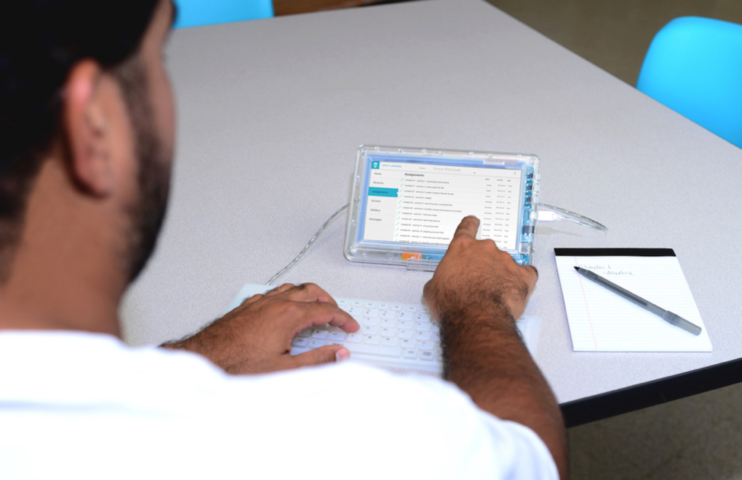By Nicole Siino
Technology is in integral part of everyday life in the 21st century. We use technology to teach, to communicate with one another, and to save lives. Imagine living far away from your family, friends, and peers. Imagine living in solitude without the ability to communicate with the ones you love. Unfortunately, this is a reality for many incarcerated men, women, and even children. Incarceration affects not only the person who is incarcerated but also everyone they love. Communication, whether it be in person, through emails or video conferencing, allows parents and children to feel some sense of normalcy when a family member is locked up.
After inmates are released from prison, it can be very difficult for them to find a job. They can re-acclimate into society better by furthering their education through the use of technology. Additionally, while inmates are in prison, the workforce continues to evolve and change, making old skill sets outdated. Technology allows prisoners to learn new techniques and to keep up with the changes. Lastly, technology allows the courts and safety officers to keep a watchful eye on prisoners and persons with open criminal cases. GPS trackers also allow defendants to continue living their lives without being locked up.
Being separated from loved ones is very difficult but having a parent or child in prison is even harder. Communication between inmates and their families allows them to stay informed and up to date on their loved ones’ lives. For many prisoners, their families live too far away or do not have access to transportation, making visits nearly impossible. In 2013, a female correctional facility in Philadelphia started a pilot program allowing supervised video conferences between prisoners and their children. Virtual visitation expanded to another correctional facility in Philadelphia as well. A study was done in 2011 by the Minnesota Department of Corrections that explored the connection between visitation and recidivism, the likelihood of reoffending. The study determined that regular visitations helped the transition from prison life back into the community. Researchers found that video chatting boosted morale and family cohesion. Video chatting can greatly improve the children’s’ lives because their parents can be more involved in what is happening in their day-to-day lives. Additionally, regular communication gives inmates things to look forward to.
Education should be a fundamental right afforded to everyone, including inmates. Schools and colleges across the country incorporate technology into their daily curriculums and many prisons are doing the same. JPay’s Lantern created a tablet-based education platform which allows inmates to earn their GED or a college degree, or to simply learn new technology. Since the programs launched in 2001, more than 70,000 students have enrolled in prisons throughout the country. More than 32,000 college credits have been earned by inmates. JPay’s Lantern’s CEO believes that education helps everyone earn a second chance. The company works with various universities and education organizations to develop curriculums. The program allows inmates to be part of a virtual classroom enabling students to speak with their professors outside of class time. Student use their tablets to complete the coursework at their own pace. In many facilities, the students can study and complete assignments in their living units, library, or the outside yard. The tablets allow them to complete their work anywhere. A professor who teaches students at a university and incarcerated students believes that both students are highly focused and are there to further their education. Studies have shown that inmate education programs decrease recidivism rates which ultimately lowers prison costs.
A New York startup company created a virtual reality technology to provide correctional services and rehabilitation programs with practical job training. The technology allows inmates to complete practical tasks like replacing a car battery. Additionally, the virtual reality technology simulates real life scenarios like watching a violent encounter and then assess their reaction and next steps to correct their behavior.
Sentencing defendants to prison should not be the only means of accomplishing the aims of the United States criminal justice system. While sometimes prison is necessary to ensure the safety of society, in many cases sentencing defendants to prison might actually be to the detriment of society. Alternative sentencing allows those who have committed nonviolent crimes to remain integrated into society and living their lives. Non-violent offenders can very easily be monitored with a GPS tracking device. Additionally, monitoring devices allows defendants to continue with their lives while following certain conditions imposed by judges. While there are critics of monitoring devices, studies have shown that it is far less costly than putting all defendants in prison.
Student Bio: Nicole Siino is one of the Content Editors on the Journal of High Technology Law. She is third-year law student at Suffolk University Law School. She holds a B.A. in History from Roger Williams University.
Disclaimer: The views expressed in this blog are the views of the author alone and do not represent the views of JHTL or Suffolk University Law School.

